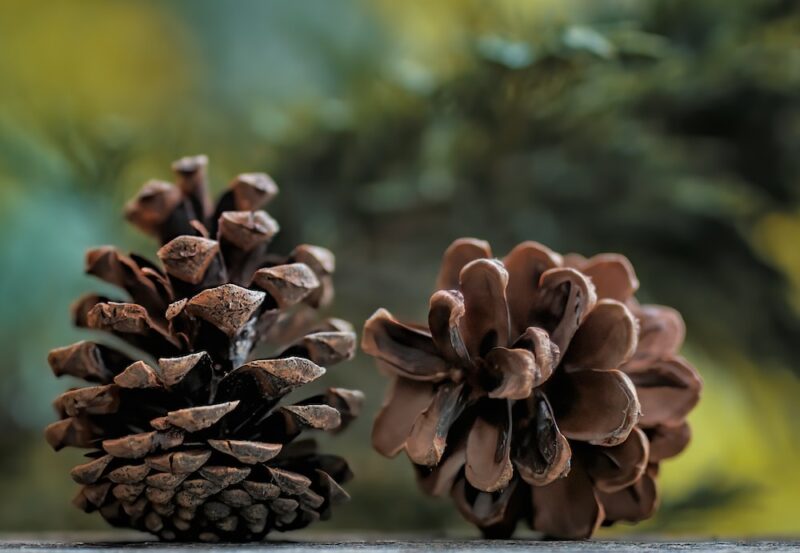pine cones as parables
(Friends, this piece originated in a meditation I offered at Bethany House of Prayer, where I offer workshops and spiritual direction. It morphed into a small essay, at the request of our Executive Director, Dawna Wall. I decided to share it here with you.)
Several days into Epiphany I pay a visit to the cathedral of pines not far from my home. Fallen limbs create small altars for the emerald moss. Stones and leaves become the Maker’s mosaics.
And PINE CONES!! They tumble into nature’s nave with casual abundance — each, a citizen of the grove. Each, a small citadel of life.
If Jesus had grown up among pine trees, I suspect we would have had more pine cone parables. They teem with lessons in infinite adaptability, much like the mustard seeds and wheat tares that he favored. I spend a good deal of time in their company these days, so I know our uncanny kinship and their worth, therefore, as matter for meditation.
The pine cone teaches, first, a profound patience. It takes upwards of three years for an immature female to be pollinated, far longer than most of the green and growing things around us.
Importantly, this long-term project of germination can only happen when pollen from a neighboring tree intersects with a cone from another tree. A single specimen will never a grove — nor even another tree — make. The pine cone offers us its deep wisdom here: the life-and-death importance of neighbors.
It is easy to stand in this tranquil wooded realm and imagine that nature has somehow ordained its serene and well-ordered society. But optimal conditions are no more guaranteed for the pine cone than they are for us humans. A fertilized seed must flourish amidst continual threats from drought, fire, predators, and floods. Care and kindness, stewarding and nourishment are needed — receptive ground in which to take hold and peacefully, organically, grow into themselves.
All of this and then some: it takes a pine tree at least 25 years to reach maturity.
I reach for a wet, newly-fallen female before me on the path — what we commonly know as the pine cone.
Immature cones are much like us. They can be scratchy and parsimonious. They close up tight at the slightest hint of adversity. They make defended fists and keep to themselves. They cling to old limbs when they might open and risk the adventure of new beginnings.
I confess in moments of weakness more than a wee resemblance to the immature pine cone. I’m not at my best when my neighbor’s leaf blower ruptures my meditation, when flames shoot from the back seat of the car while my husband is driving, when I find a teaspoon of chocolate chip ice cream left in the freezer, when a friend unexpectedly flips out.
I find a hundred justifications for retreat or simmering peevishness.
I am also massively guilty of diverting into secondary purposes. Where the pine cone does service as ornament, bird feeder, and fire starter, I can too easily adjust my aims to the low hanging fruits of ineffectual worrier, advice giver, fixer of others’ flaws.
It is useful, then, to come to this grove. Useful to recall that the pine cone was put here to become — not a place-card holder but a majestic tree. A shelter for all who pass beneath, stable, steady, home to Great Horned Owls and many species of hawks. An essential citizen in a grove that offers each member reciprocal support through its dense system of nurturing roots.
I love Epiphany under the pines because the light is cleaner and sharper this time of year, unembellished by summer’s brocades. The view of my own life becomes less cluttered. The truth of things, the way the parts make up a whole, is simpler, becomes easier to grasp.
The pine cone can’t achieve her true purposes alone. Quite the opposite. A thriving grove is the story of interdependence, serendipity, and chance, all held within a fragile and unpredictable ecosystem.
Is it so very different for us?
I will carry back to my kitchen this prickly, fragile seed pod as a reminder of my Epiphany walk among her elders. And as I brew a cup of tea, I will ponder the questions she has roused in me.
— What pollen – ideas, enthusiasm, animating energy — do I have to offer others?
— What seeds might I risk releasing to the uncertainties of growth?
— How might I better join my aims to the nurturing root system of the grove in which I spend my days?
What generativity and patient fellowship would make me a more worthy tree?
Here’s a lovely piece of music to start your day…
Mary Lattimore’s “Pine Trees:”
https://www.youtube.com/watch?v=4YD5xR4soTA





Susan Porter
January 12, 2023at10:04 amKathleen,
This essay is like a tapestry —rich with food for thought. It will take me days (in my busy life right now) to digest all of its meanings, but thank you so much for sharing it in your blog. It seems like a piece of writing I will come back to again and again.
Kathleen Hirsch
January 12, 2023at10:23 amI’m glad it resonated, Susan!